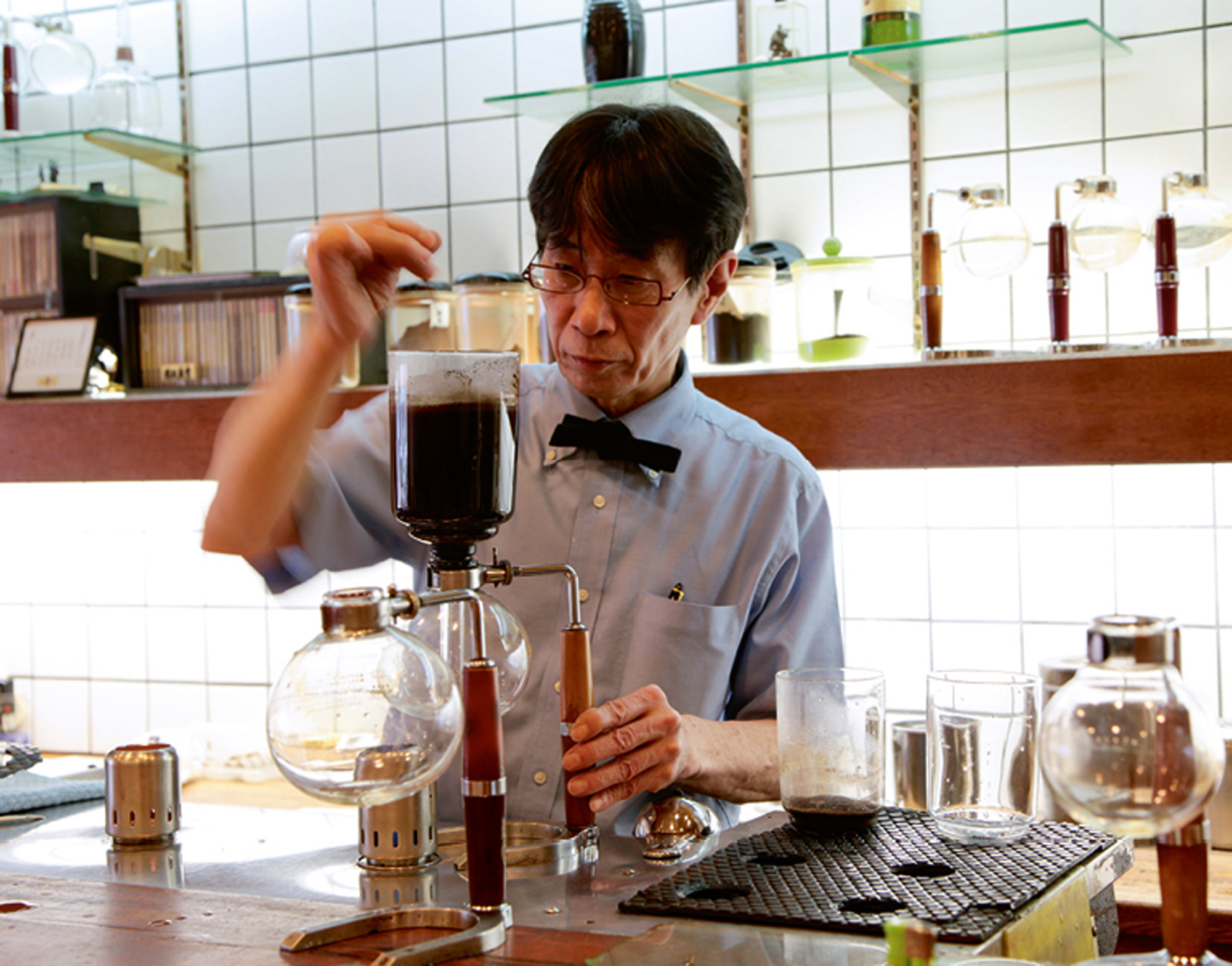Ingestion / Liquid Power
Japan’s handmade coffee culture
Merry White
“Ingestion” is a column that explores food within a framework informed by aesthetics, history, and philosophy.
Katsu Tanaka lays out his wrenches and screwdrivers along the side of his Italian espresso machine on the counter at Bear Pond in Shimokitazawa, a scrambly sort of hip neighborhood in Tokyo. With these hand tools, he is about to start a short intense day of pulling shots. He’s very nice, very friendly, and very serious about coffee. Each shot must be as perfect as he can get it, so after each one, he dismantles the handle and steam cleans every part before reassembling the works to draw another. The intensity of his concentration and diligence are, to an American observer, extreme. But it is how he makes coffee, great coffee, and he is pretty much done after twenty or twenty-five shots, even if it’s eleven in the morning. After that, he’ll only make you a pour-over (“hand pour” in Japanese). This is handmade espresso, as near as can be, the tweaking and the tiny adjustments made for each shot making coffee a craft, not a machine-made product.
The ironies of Tanaka’s technique are evident: high artisanship in a land of high technology, in service to espresso in a land where the pour-over has been king for nearly a century. The concept of the handmade is a very important one in Japan—we would refer to it as “artisanal” but it is quite explicitly that it is made “by hand” that is crucial. In coffee it is absolutely central, and all the technology available in what is perhaps the most technological society on earth has not led to a better “Mr. Coffee” but rather to better hand tools, such as simple-looking but profoundly engineered filter holders. For decades, espresso was not considered worthy of Japanese connoisseurs—not because of its foreign or Italian origins but because the espresso machine, even the high-end La Marzocco, seemed to stand between the maker and his product, interfering with the demonstration of his skill and dedication. A person making coffee demonstrates his or her kodawari—a patient perseverance, a palpable search for perfection through repetition and discipline. And it is through the hand, the arm, the breathing, and the complete focus of body and mind that this can be managed. This painstakingly prepared pour-over, as well as beverages such as cold brew, has accelerated the pace of coffee connoisseurship in the US, the UK, and other ports of call.

Coffee may not seem very Japanese, but it is—like coffee elsewhere in developed societies, it has become an indigenous habit and is now completely at home in Japan. It has lost what the anthropologist Koichi Iwabuchi calls its “cultural odor,” just as it has in the US where, however far the beans have traveled, coffee is hardly regarded as a foreign drink. Centuries after coffee came to the West, traveling from the Levant to central and western Europe, its foreign origin as a customary drink is largely ignored. And today most coffee in the world is drunk far from where it is grown; the only significant coffee-producing country that is also a major coffee-consuming country is Brazil. Wherever it lands, coffee settles and becomes local. In Japan, more is consumed now in public social spaces, such as cafés, than tea. The iconic green tea will remain iconic, as a symbol of Japan’s cultural civility, but it is coffee that turns the social wheels.